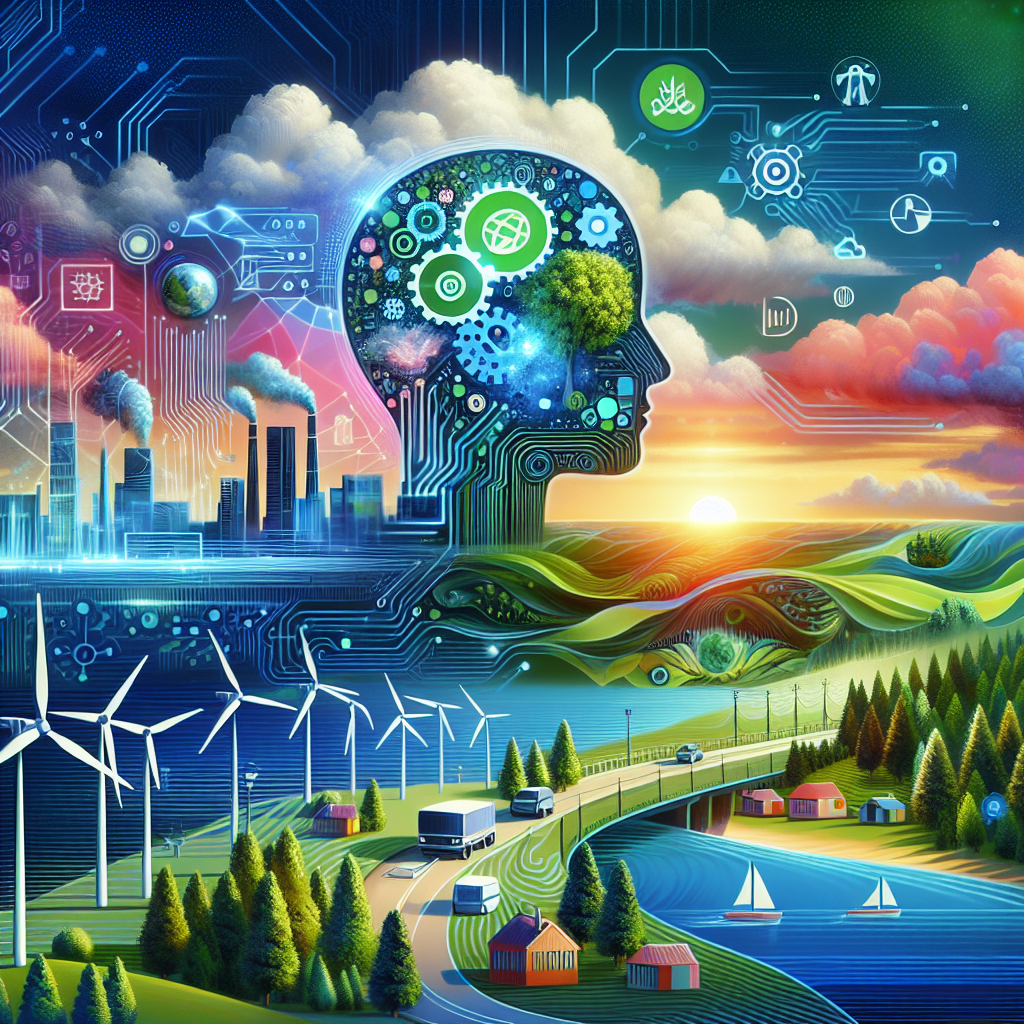In recent years, the effects of climate change have become increasingly apparent, with rising global temperatures, more frequent extreme weather events, and threats to food and water security. As the world grapples with the urgent need to address these challenges, the role of artificial intelligence (AI) in building climate resilience and creating a more sustainable future has come to the forefront.
AI technologies have the potential to revolutionize the way we approach climate resilience by offering new tools and solutions to help us better understand, predict, and mitigate the impacts of climate change. From improving disaster response and management to optimizing energy systems and reducing greenhouse gas emissions, AI has the potential to drive transformative change in the fight against climate change.
One of the key ways in which AI can help build climate resilience is through its ability to analyze vast amounts of data and generate insights that can inform decision-making. By leveraging AI-powered analytics, researchers and policymakers can better understand the complex interactions between climate and human activities, identify vulnerabilities and risks, and develop more effective strategies for adaptation and mitigation.
For example, AI algorithms can analyze satellite imagery to monitor changes in land use and deforestation, track sea-level rise and coastal erosion, and predict the impact of extreme weather events on vulnerable communities. By combining these insights with other data sources, such as climate models, economic indicators, and social demographics, AI can help stakeholders develop more targeted and evidence-based interventions to build resilience and reduce climate risks.
AI can also play a crucial role in improving disaster response and management by enabling faster and more accurate decision-making in times of crisis. By analyzing real-time data from sensors, social media, and other sources, AI-powered systems can identify emerging threats, assess their potential impact, and recommend the most effective response strategies.
For example, AI algorithms can analyze patterns in social media posts to identify areas where people may be in need of assistance during a disaster, such as floods or wildfires. By combining this information with data on weather conditions, infrastructure vulnerabilities, and emergency resources, AI can help emergency responders prioritize their efforts and deploy resources more efficiently.
In addition to improving disaster response, AI can also help optimize infrastructure and resource management to enhance climate resilience. By using AI-powered systems to monitor and control energy, water, and transportation systems, cities and communities can reduce their carbon footprint, improve resource efficiency, and enhance their overall resilience to climate impacts.
For example, AI algorithms can analyze data from smart meters and sensors to optimize energy usage in buildings, predict peak demand periods, and integrate renewable energy sources into the grid. By dynamically adjusting energy consumption based on real-time data and demand patterns, AI can help reduce emissions, lower energy costs, and improve overall energy resilience.
Furthermore, AI can help enhance agricultural productivity and food security by providing farmers with valuable insights and recommendations to optimize crop production, manage water resources, and adapt to changing climate conditions. By analyzing data on soil quality, weather patterns, and crop health, AI-powered systems can help farmers make more informed decisions about planting, irrigation, and pest control, ultimately improving yields and sustainability.
Overall, AI has the potential to revolutionize the way we approach climate resilience and sustainability by offering new tools and solutions to address the complex challenges posed by climate change. By leveraging AI technologies to analyze data, generate insights, and optimize decision-making, we can build more resilient communities, enhance resource efficiency, and reduce our impact on the environment.
FAQs:
Q: What is AI?
A: AI, or artificial intelligence, refers to the simulation of human intelligence in machines that are programmed to think and act like humans. AI technologies include machine learning, natural language processing, computer vision, and robotics, among others.
Q: How can AI help address climate change?
A: AI can help address climate change by analyzing data, generating insights, and optimizing decision-making to improve disaster response, infrastructure management, resource efficiency, and agricultural productivity.
Q: What are some examples of AI applications in climate resilience?
A: Examples of AI applications in climate resilience include analyzing satellite imagery to monitor deforestation, tracking sea-level rise and coastal erosion, optimizing energy usage in buildings, and providing farmers with recommendations to improve crop production.
Q: What are the challenges and limitations of using AI for climate resilience?
A: Challenges and limitations of using AI for climate resilience include data privacy concerns, algorithm bias, and the need for interdisciplinary collaboration to develop effective solutions that address the complex nature of climate change.
Q: How can policymakers and stakeholders leverage AI to build climate resilience?
A: Policymakers and stakeholders can leverage AI to build climate resilience by investing in AI research and development, integrating AI technologies into existing systems and processes, and fostering collaboration between government, industry, and academia to drive innovation and impact.

